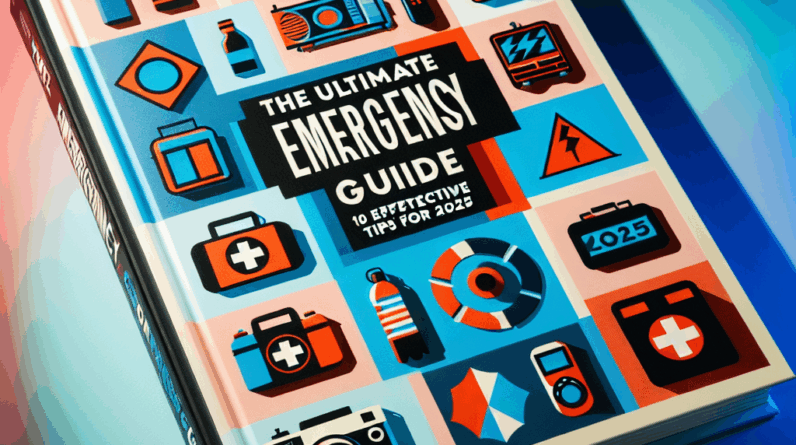With the increasing unpredictability of weather patterns, it’s more important than ever to ensure your home is safeguarded against nature’s wrath. This comprehensive guide will walk you through the essential steps to protect your property from severe weather, ensuring peace of mind during stormy seasons.
Evaluate Your Property’s Vulnerabilities
# Understanding Your Location
First and foremost, recognizing the geographical threats unique to your residency is crucial. The type of severe weather you’re likely to encounter varies greatly depending on if you’re near the coast, nestled in a forest, or at the foot of a mountain. Reflecting on how my own residence was influenced by its surroundings was a real eye-opener when I first moved in. Survey your area to pinpoint potential hazards.
Engaging with neighbors who have experienced the local weather patterns firsthand can offer invaluable insights into potential vulnerabilities. They might also share useful preventive measures you could adopt. Additionally, keep abreast of historical weather data from local authorities or weather agencies to enhance your preparedness for future conditions.
# Inspecting Your Structure
Once you understand your regional risks, a thorough inspection of your home’s structure becomes imperative. Pay particular attention to your roof, windows, and doors, as these can become critical weak points during severe weather. Checking for missing or loose shingles on your roof before the storm season is crucial.
Further, evaluate your windows and consider installing storm shutters or reinforcing them with plywood. Upgrading to double-pane windows can also offer better insulation and protection. Don’t overlook your foundation—seal any cracks or gaps to prevent water intrusion during heavy rains. A well-maintained structure is your first defense against unexpected weather challenges.
# Develop a Risk Assessment Plan
Identify and list down all vulnerable spots and their potential impacts. This visualization aids in crafting a targeted strategy for addressing each risk. For example, enhancing drainage should be a priority if your area is prone to flooding. While the process may seem overwhelming, breaking it down into smaller, actionable steps simplifies management.
Incorporate your household in the planning process to ensure everyone knows the emergency procedures, which can be lifesaving during actual events.
Invest in Quality Weather-Resistant Materials
# Choosing Durable Materials
Selecting the right materials for construction or renovation is pivotal. After facing several severe weather events, I realized the importance of using resilient materials like metal roofs and fiber-cement siding. While initially more costly, high-quality materials offer long-term savings by reducing repair needs post-storm.
Consider sustainable materials that not only withstand environmental pressures but also contribute to a greener planet. These materials tend to offer superior resistance to severe weather conditions, enhancing the durability of your property.
# Regular Maintenance Checks
Regular home maintenance is key to preparedness. I’ve learned to schedule quarterly inspections to clear gutters, trim trees, and check for wear and tear. Creating a maintenance calendar with tasks tailored to the seasons can help maintain your home in peak condition, saving both time and money in the long run.
Moreover, the satisfaction of maintaining your property can boost your confidence in handling any weather-related challenges.
# Beyond the Property: Landscaping for Protection
Effective landscaping goes beyond aesthetics, playing a crucial role in protecting your property during severe weather. Strategic placement of trees can shield against high winds, and certain plants can aid in water absorption during downpours.
Choose plant species that are robust and suitable for your local climate. Regular pruning is essential to eliminate weak branches that could become hazardous. Also, consider yard grading to improve drainage and prevent water accumulation near your foundation.
Create an Emergency Preparedness Plan
# Emergency Supplies Kit
The unpredictability of severe weather necessitates a well-stocked emergency kit. Gather essentials such as bottled water, non-perishable food, medical supplies, flashlights, and batteries. Ensure your kit also includes a first-aid kit, blankets, and a battery-operated radio.
Store your emergency supplies in an accessible location and regularly check and update its contents to ensure readiness at all times.
# Communication Strategy
Effective communication is critical during severe weather. Establish clear communication plans with your family, including emergency contacts and rendezvous points. Utilize weather apps for real-time alerts and maintain active communication channels with friends and family.
Social media can also be a valuable resource for local updates and community support during emergencies.
# Practice Drills
Conducting regular emergency drills helps reinforce your preparedness plans. Allocate time bi-annually to review and practice your emergency procedures with everyone in your household. Familiarity with evacuation routes and emergency protocols can significantly improve response times during actual events.
Regular drills not only boost confidence but also ensure everyone understands their role in emergency situations, enhancing overall safety.
Stay Informed and Be Proactive
# Monitoring Weather Forecasts
Staying ahead of weather conditions is crucial for effective preparation. Regularly check weather forecasts and set up alerts to stay informed about potential severe weather. Proactive measures based on timely information can greatly enhance your property’s safety.
For regions prone to specific disasters like hurricanes, engage with local media and community meetings to stay updated on emergency plans and resources.
# Utilizing Technology for Alerts
Incorporating technology can greatly aid in your weather preparedness strategy. Utilize weather radios and smart home systems to receive timely alerts. Smart devices can automate safety measures, such as closing windows or shutting down appliances during severe weather, adding an extra layer of security.
Always have backup plans as technology can sometimes fail during critical times.
# Community Resources and Support
Explore local government and community resources aimed at disaster preparedness. Participating in community programs can strengthen local ties and provide additional support during emergencies. Engage in community meetings to share and learn from others’ experiences, fostering a collaborative approach to disaster readiness.
Obtain Appropriate Insurance Coverage
# Understanding Your Policy
Insurance is a critical aspect of weather readiness, especially in areas frequently impacted by severe weather. Regularly review your insurance policy to ensure it covers natural disasters pertinent to your region. Surprises in coverage can lead to significant challenges during actual emergencies.
Consult with your insurance agent to fully understand your policy’s terms and ensure it provides comprehensive coverage against weather-related damages.
# Reviewing Coverage Regularly
As your property and its surroundings evolve, so should your insurance coverage. Regularly assess your insurance needs, especially after making significant changes or improvements to your property. Adjust your coverage to reflect current risks and property values to avoid potential underinsurance.
Understanding and adapting your insurance coverage can prevent future financial burdens in the wake of severe weather.
# Seeking Professional Advice
When in doubt, consult with insurance professionals to ensure your coverage meets your needs. Financial advisors and insurance agents can offer tailored advice, enhancing your understanding and confidence in your insurance decisions.
Professional guidance can provide clarity and ensure you are adequately protected against the unpredictabilities of severe weather.
Frequently Asked Questions
# 1. What are the most common types of severe weather I should prepare for?
Common severe weather events include hurricanes, tornadoes, floods, and winter storms. It’s crucial to tailor your preparation strategies to the specific threats your area faces.
# 2. How can I ensure my home has adequate drainage?
Regularly inspect and clean your gutters and downspouts. Consider extending downspouts away from your foundation and grading your landscape to direct water away effectively.
# 3. What should I include in my emergency supply kit?
Include essentials such as bottled water, non-perishable food, a first-aid kit, flashlights, batteries, blankets, and important documents like identification and insurance papers in your emergency kit.
# 4. How can I learn about local emergency resources?
Contact your local emergency management office or search online for community groups that focus on disaster preparedness. These resources can provide valuable information and support.
# 5. Is flood insurance necessary if I don’t live in a flood zone?
Even if your area isn’t designated as a flood zone, considering flood insurance is wise. Unanticipated flooding can occur anywhere, especially during extreme weather events, and having flood insurance can provide essential coverage.




